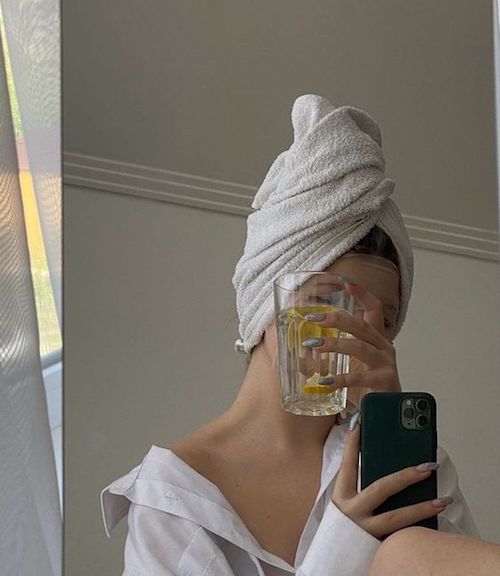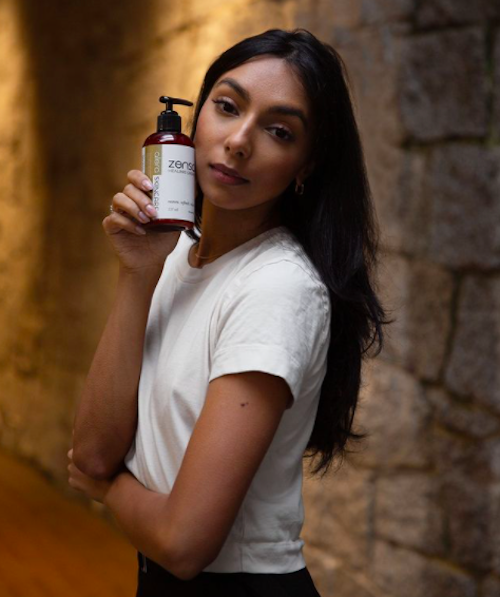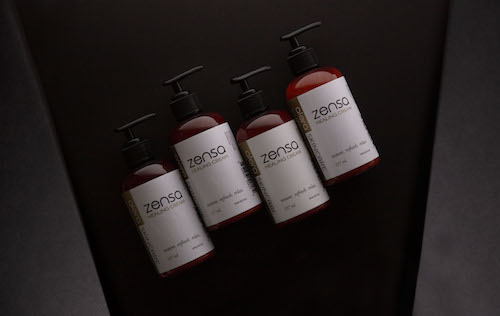Microneedling After-Care: Your Guide To The Healing Process
Microneedling After-Care: Your Guide To The Healing Process
While not magical, microneedling gets you considerably closer to waking up with naturally airbrushed skin. Microneedling (also known as collagen-induction therapy) is a cosmetic treatment that uses a derma roller containing several tiny needles to puncture the top layer of your skin. Think of microneedling as a strength-training exercise for your skin barrier. The controlled injuries create micro-tears (tiny wounds), triggering the skin’s wound-healing response. This process stimulates collagen production to increase cellular turnover and improve the skin barrier’s resilience to treat uneven skin texture, brighten skin tone, provide anti-aging effects, and help reverse sun damage. The benefits of microneedling include smoothing wrinkles, fine lines, reducing hyperpigmentation, stretch marks, acne scars, and shrinking pore size, among others. There’s considerable information out there on how to prepare and what to expect at a microneedling appointment. However, microneedling after-care is more likely to be overlooked (due to the minimal healing time) and is one of the most important factors for getting your desired results.

While your dermatologist should provide you with personalized microneedling after-care instructions (follow them precisely), we’re sharing some general guidelines on what to expect and best practices to care for your skin during the microneedling after-care process.
Read on to learn more about microneedling recovery, must-know after-care tips, what to avoid, the best products to use, and more.
An Overview of The Microneedling Healing Process
The microneedling healing process should take between 5-7 days. After 1-2 weeks, you should be able to engage in all your normal daily activities and resume your regular skincare routine. Your skin will likely feel like it’s sunburned immediately after the microneedling treatment. Dry, itchy skin is common. Your complexion will feel tighter, warmer, and more sensitive than usual. Redness, swelling, and minor bruising are common with microneedling. You might also see some minor bleeding or small marks from the needles still visible on your skin.

Expect your skin to be the most inflamed during the first 1-3 days of the healing process. Your skin could appear bright red for up to 24 hours before subsiding and reverting to its normal hue over the next couple of days. During this recovery window, you will need to be extra mindful of the products you use and avoid any habits or products that could introduce bacteria to the vulnerable skin. After around 3-5 days, the peeling stage of the microneedling healing process will begin. This flaky skin shows signs of cellular turnover – an important part of the wound-healing process. On days 5-7, the skin cells should continue repairing themselves, and any irritation should subside. While the recovery process should be mostly over, it could take up to another week to build up your skin barrier strength and resilience.
Simplify Your Skincare Routine
Maintaining clean and moisturized skin is key during the microneedling after-care process, especially during the first 1-3 days. Keep your skincare routine as simple as possible. Ensure any product you use on your face for the week after microneedling is fragrance-free, alcohol-free, and chemical-free. After the first 5-7 days, you should be able to begin reintroducing most of your favourite serums back into your daily skin regimen. Wait 6-8 hours before first washing your face after your microneedling appointment. Only lukewarm water and hyaluronic acid should ever touch your skin before this 6-hour mark.
Wash your face, using clean hands, with lukewarm water (never hot or cold), and a gentle, non-exfoliating cleanser, then follow with a natural moisturizer, like Zensa Healing Cream, and a hyaluronic acid-based serum. Pat your face dry with a fresh paper towel and carefully tap your moisturizer into your skin. Peptides, ceramides, and vitamin E serums can be used alongside or instead of hyaluronic acid.
Apply sunscreen every day after microneedling, especially for the first two weeks.
Avoid skincare products containing the ingredients like vitamin C, glycolic acid, alpha-hydroxy acids, retinol A, or at least 48 hours after microneedling. Be cautious when gradually adding these products back into your skincare routine, especially those designed for powerful anti-aging benefits. It is best to wait at least 5 days before reintroducing products that contain these elements – especially if you have sensitive skin. Ask your expert for a personalized recommendation on when to add these compounds back into your routine.
Prioritize Hydration
Microneedling leaves your skin begging for hydration. One of the main functions of the skin barrier is preventing water loss to retain the skin’s moisture. Microneedling temporarily damages your skin barrier, encouraging trans-epidermal water loss. This controlled skin trauma makes your complexion feel dry, tight, and inflamed. Dry skin also loses its suppleness and leaves you with a thinner skin texture that is more vulnerable to cracking, bleeding and provides an easier pathway for unwanted germs or bacteria to irritate or infect the skin.

Especially in the first 1-3 days after microneedling, your skin will crave lots of moisture to support the healing process. Hyaluronic acid is a favoured product to use after microneedling. It is a humectant, meaning that it attracts and retains moisture to the skin. These sugar molecules hold up to 1,000 times their weight in water. Hyaluronic acid has many scientifically-proven benefits, including improving skin hydration (96%) and skin elasticity (55%) in only 8 weeks. It stimulates collagen production to smoothen fine lines and wrinkles to maximize your results from microneedling. Here’s everything you should know about hyaluronic acid, including its benefits, how to use it, and more.
Some of the other best hydrating products to use during the microneedling after-care process include aloe vera, ceramides, niacinamide, and peptides. Zensa Healing Cream contains hydrating ingredients, including aloe vera, sunflower seed oil (both rich in anti-inflammatory vitamin C and vitamin E), calendula oil, glycerin, and hyaluronic acid, among others. These ingredients soothe inflammation, accelerate wound-healing, and increase collagen production to nourish and repair the skin barrier.
Stay Out Of The Sun
Your skin is particularly sensitive to sun damage and harmful UV rays right after microneedling. Avoid exposing your skin to direct sunlight for at least 14 days after microneedling. Apply sunscreen with at least 30 SPF every day and right before going outside (especially for the first week after your treatment). Wait at least 4-6 weeks before engaging in other activities that involve exposure to UV rays, such as chemical peels and laser treatments.
Remain Bare-Faced
Avoid wearing makeup or any cosmetics for at least 24 hours after your microneedling treatment. It is best to wait at least 72 hours before applying products aside from nourishing skincare to your face. If you do choose to wear makeup within the first few days after microneedling, always apply your cosmetics with clean hands or a disposable applicator. Never use a regular makeup brush. Previously-used tools can allow unwanted bacteria to enter the fresh wound and irritate or infect the healing skin. Plan your social calendar accordingly.

Don’t Sweat
Sweating and excess moisture increase the likelihood of bacteria, fungus, and other unwanted microbes infecting the already-weakened skin barrier. Avoid intense exercise, saunas, hot showers, and baths for at least 3 days after microneedling. Refrain from going into communal bodies of water, such as swimming pools, hot tubs, or the ocean for one week after microneedling. The moisture and unknown microbes in the water could easily harm your healing skin.
Embrace Inflammation
Never put ice on the skin after microneedling. Your face may sting a bit during the first 1-3 days of the healing process and tempt you to engage in this wound-soothing activity. While it may seem counterintuitive, the inflammation needs to run its course. This process is essential to properly restore, heal, and strengthen your skin barrier.
Don’t take anti-inflammatory medications or supplements for at least one week after microneedling. Some products to avoid include NSAIDs, such as Advil, Ibuprofen, or Motrin, or ginger, turmeric, fish oil, vitamin E, arnica and bromelain supplements.

Hands Off
Germ-free skin is essential to promote healing, prevent infection, and achieve a healthy glow after microneedling. Always wash your hands before touching your face. Only touch your face when washing it or applying serums and moisturizer.
Sleep on your back for the first week or at least 3 days after microneedling. Elevate your pillow while you sleep for the first 1-3 nights to reduce swelling. Avoid sleeping on your stomach or side during this initial healing period to ensure that no dirt, germs, or bacteria irritate your skin. Refresh your bed with clean pillowcases – in case you end up unconsciously tossing or turning during the night.
Embrace Healthy Habits
Use your pursuit of youthful, glowing skin as a motivator to reset your healthy habits. Avoid consuming caffeine, alcohol, or cigarettes (or other tobacco products) for one week after microneedling. These substances will further increase redness and dehydrate your skin. Support your immune system and stay hydrated to aid the microneedling healing process. Drink plenty of water. Maintain a healthy diet, including plenty of antioxidant-rich fruits and vegetables, to hydrate and nourish your skin. Aside from feeling healthier, these lifestyle habits can help your skin glow inside and out.

Credit: Mille World/Pinterest
Trust The Process
Around 3-5 days after your microneedling treatment, your skin might start flaking and peeling. These symptoms are perfectly normal and show that your skin is healing properly. While unsightly, visible dead skin cells are a sign of increased cellular turnover. A new layer of healthy, supple skin is coming to the surface shortly.
Never touch or peel off the dead skin cells. It may be tempting to pick at your skin or exfoliate. However, interfering with this natural skin-shedding process will backfire. Using an exfoliating brush or product will further disrupt the skin barrier, increasing the redness, tightness, or skin sensitivity. Let the dead skin flakes fall off naturally. Make sure to keep your skin hydrated to aid the skin’s recovery process during this healing stage. You can start exfoliating one week after microneedling.
Be Patient
One treatment should provide noticeable results. However, a single microneedling session is not a miracle cure. It often takes around 3-6 microneedling treatments to achieve your desired results. It may take up to 8 sessions to treat certain skin issues, like deep scarring. The number of sessions you need depends on the skin issue you’re addressing, your skin type, and lifestyle habits. Speak with your dermatologist for insight on your personal treatment plan.
Schedule a treatment every 4-6 weeks to allow your skin to heal in-between sessions.
Learn more about what to expect before, during, and after microneedling HERE.



